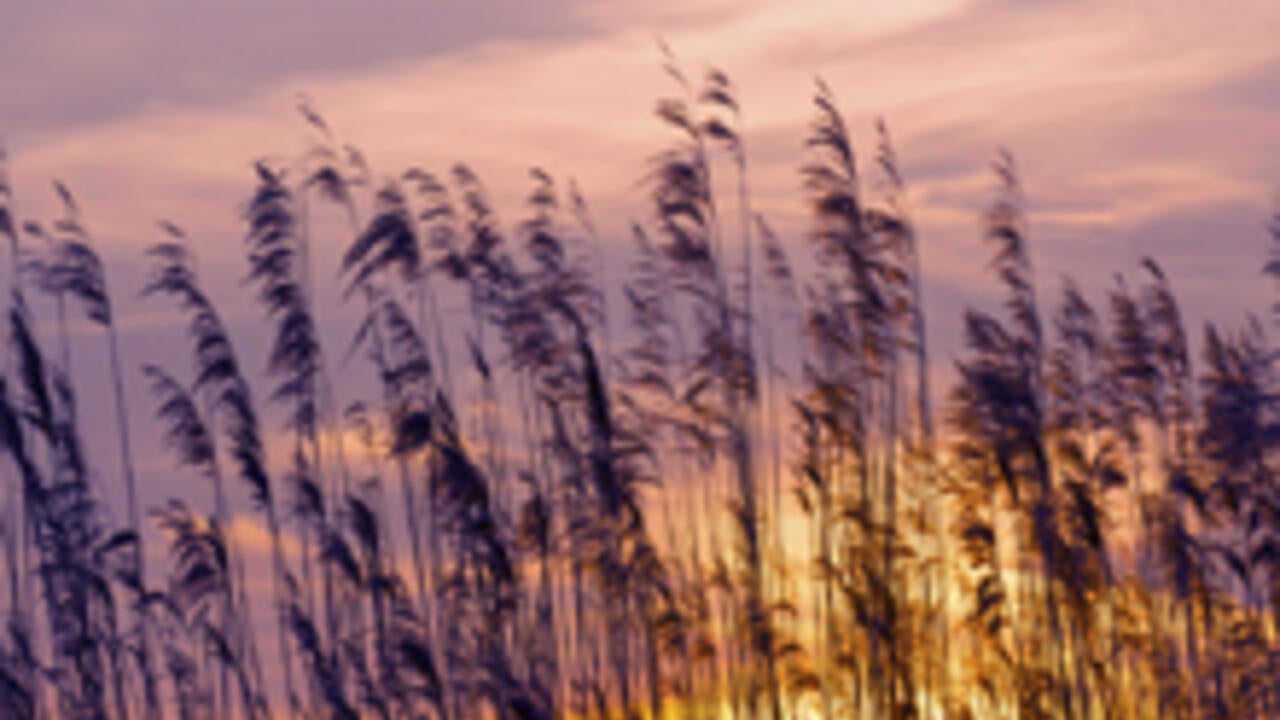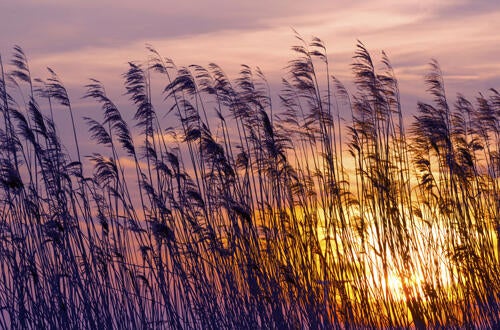
Canada’s worst invasive wetland plant is destroying bird nesting areas
Waterloo researchers investigate how a giant reed from Europe is affecting bird habitats in Lake Erie’s Long Point Marsh

Waterloo researchers investigate how a giant reed from Europe is affecting bird habitats in Lake Erie’s Long Point Marsh
By Victoria Van Cappellen Faculty of Science
Two University of Waterloo scientists are investigating how a giant reed from Europe - regarded as Canada’s worst wetland invasive plant - is destroying bird habitats.
The Phragmites australis, which can grow as tall as 20 feet, is an aggressive plant invading our roadways, shorelines and wetlands. Biology Professor Rebecca Rooney and Courtney Robichaud, a masters student in the Faculty of Science, are investigating how bird communities in Lake Erie’s Long Point Marsh are responding to the invasion of what is commonly known as Phrag.
Rooney and Robichaud are also looking at the ecological effects and management of Phrag in the marsh. In Long Point, Phrag has spread from only 17 hectares in 1995 to thousands of hectares today. Historically, Long Point was dominated by marsh meadow and cattail plant communities, that are now being replaced by the invasive Phrag, which is affecting the bird community composition in the marsh.
Waterloo researchers plan to spend a second season collecting bird counts in the summer, which will be used to continue restoration efforts and wildlife management currently under way. In the past 20 years, invasive species have surpassed pollution and habitat destruction as the No. 1 cause of wetland degradation across the Great Lakes region. Another Waterloo grad student, Graham Howell, is helping the team by studying the effectiveness of current restoration efforts.
Phrag arrived in North America through the St. Lawrence River in 1916, but rapidly expanded in the 1990s. It hitches rides on trucks or any piece of machinery carrying soil. A piece of a root is enough for it to easily establish itself and become a plant.
Because Phrag is so tall, it shades out other plants and when it dies, Phrag continues to stand, creating the “standing dead,” that continues to shade out other plants while it slowly decomposes. Phrag also shades and cools the soil, creating a microclimate that affects what grows and survives. Root systems can reach nearly two metres below ground and release toxins that keep other plants from growing.
A changing distribution of native versus invasive plants must be managed actively to maintain wetland biodiversity and native bird populations. Although the soil and microclimate effects are well documented, few researchers have looked at bird nesting areas.

Read more
Waterloo researchers have developed a new quantum computing approach that brings science closer to simulating the early universe

Read more
New research from the University of Waterloo centres Haudenosaunee-led efforts in the repatriation and reclamation of cultural and intellectual property

Read more
Astronomers spot massive gas streams flowing from ultra-hot Jupiter that rewrite expectations for these massive giants of space
The University of Waterloo acknowledges that much of our work takes place on the traditional territory of the Neutral, Anishinaabeg, and Haudenosaunee peoples. Our main campus is situated on the Haldimand Tract, the land granted to the Six Nations that includes six miles on each side of the Grand River. Our active work toward reconciliation takes place across our campuses through research, learning, teaching, and community building, and is co-ordinated within the Office of Indigenous Relations.